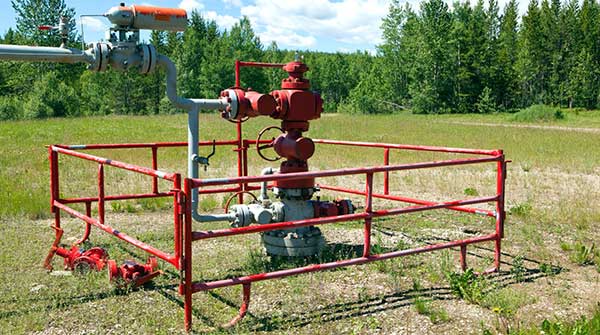Retrofitting orphan wells to geothermally heat wintertime water for cattle
Tapping the potential of geothermal energy could offer a way to repurpose inactive oil and gas wells, according to a University of Alberta experiment looking at the economic feasibility of heating drinking water for cattle.
The case study modelled the economic pros and cons of retrofitting disused wells on a large Alberta ranch to geothermally heat wintertime water for 2,000 cattle.
|
|
|
|
 |
| Related Stories |
| Geothermal energy could be generated from captured CO2, study shows
|
| Canadian cattle industry faces a growing crisis
|
| Turning Alberta’s inactive wells back into assets |
Though the idea ultimately came up dry financially for the rancher, the project yielded some useful information for future repurposing of orphan wells to harness thermal energy in the Earth’s crust, says Daniel Schiffner, who led the research.
“We’ve provided a good first step to take – a template for estimating the cost of converting a well and a way to predict the heat energy you can get for that well.”
With more than 450,000 inactive petroleum wells scattered across Alberta, finding economically feasible ways to reuse their infrastructure could ease the financial burden on taxpayers, adds Schiffner, who conducted the research as part of his master’s in science in risk and community resilience in the Faculty of Agricultural, Life & Environmental Sciences.
“If industry is unable or unwilling to reclaim a well, ultimately it falls upon the government to do so, so retrofitting presents an opportunity for other uses. We can benefit from turning some of them from a liability into an asset, and at the same time offset carbon emissions.”
The study’s findings help lay the planning groundwork for projects in particular areas, Schiffner suggests.
“I could see applications, for example, when talking about food insecurity in northern communities. If there’s a nearby well, they may be able to build a greenhouse and heat it with geothermal energy that’s right there.”
Similarly, farmers could operate greenhouses near inactive wells on land left idle after harvest, providing an additional income source, he adds.
“We could have some really interesting regional projects and, at the same time, make a small contribution to addressing the energy crisis.”
Based in the lab of associate professor Lianne Lefsrud, the case study focused on finding out the costs, benefits and power ratios of retrofitting inactive wells scattered around the ranch.
The researchers’ assessment estimated the geothermal power potential of some of the wells, along with all costs and revenues expected over a 25-year lifespan.
With a projection of $865,030 in expenses and just $19,255 in benefits, the researchers determined that a retrofit wouldn’t be economically feasible in this case. An expected reduction in livestock feed costs of just over $1,500 per year was too small to justify significant capital spending.
But the exercise did reveal factors that would make well retrofits more financially practical, including choosing wells that were classified as “suspended” rather than abandoned. The study estimated that retrofitting an abandoned well would cost up to $50,000 more due to the extra time and materials needed to unseal it.
The researchers also found that reliable estimates of both the well retrofit costs and thermal power potential can be based on two factors: well location and vertical depth.
“Out of hundreds of thousands of wells, this helps quickly find and initially evaluate target areas that could be of interest,” says Schiffner.
Along with that, the study showed that the economic case for retrofitting is stronger if the orphan well is located close to its intended use.
“Once you get that geothermal heat to the surface, it wants to dissipate, so the farther you have to transport that hot liquid, the cooler and less effective it’s going to get and the more you have to spend to transfer it.”
Besides benefiting the environment, the study suggests that the long lifespan of a geothermal energy source tends to outweigh the initial cost of retrofitting a well, making the economics of such a project more attractive to private industry.
“That might be an incentive that lets the government transfer the responsibility for some of these orphaned wells,” Schiffner notes.
| By Bev Betkowski
Bev Betkowski is a reporter with the University of Alberta’s Folio online magazine. The University of Alberta is a Troy Media Editorial Content Provider Partner.
The opinions expressed by our columnists and contributors are theirs alone and do not inherently or expressly reflect the views of our publication.
© Troy Media
Troy Media is an editorial content provider to media outlets and its own hosted community news outlets across Canada.


